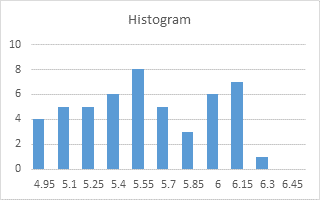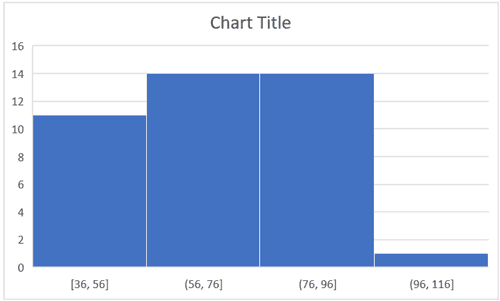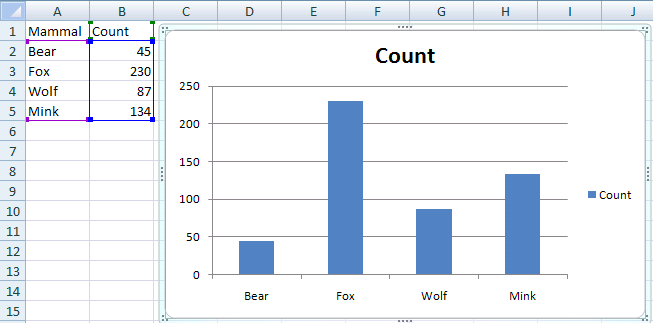

This will open a pane on the right with all the relevant axis options. Now you can customize this chart by right-clicking on the vertical axis and selecting Format Axis. The above steps would insert a histogram chart based on your data set (as shown below).

Suppose you have a dataset as shown below. In case you’re using Excel 2013 or prior versions, check out the next two sections (on creating histograms using Data Analysis Toopack or Frequency formula). Creating a Histogram using FREQUENCY FunctionĮxcel 2016 got a new addition in the charts section where a histogram chart was added as an inbuilt chart.Creating a Histogram using Data Analysis Toolpak.

Creating a Histogram Using Data Analysis Tool pack.Let’s see how to make a Histogram in Excel. If you’re using Excel 2013, 2010 or prior versions (and even in Excel 2016), you can create a histogram using Data Analysis Toolpack or by using the FREQUENCY function (covered later in this tutorial).If you’re using Excel 2016, there is an in-built histogram chart option that you can use.There are different ways you can create a histogram in Excel: You can easily create a histogram and see how many students scored less than 35, how many were between 35-50, how many between 50-60 and so on. The histogram condenses a data series into an easily interpreted visual by taking many data points and grouping them into logical ranges or bins.Ī simple example of a histogram is the distribution of marks scored in a subject. It’s a column chart that shows the frequency of the occurrence of a variable in the specified range.Īccording to Investopedia, a Histogram is a graphical representation, similar to a bar chart in structure, that organizes a group of data points into user-specified ranges. # Set the xticklabels to a string that tells us what the bin edges wereĪx.Watch Video – 3 Ways to Create a Histogram Chart in ExcelĪ histogram is a common data analysis tool in the business world. # Set the ticks to the middle of the barsĪx.set_xticks() # Plot the histogram heights against integers on the x axis Hist, bin_edges = np.histogram(data,bins) # make the histogram For example: import numpy as npĭata = # random data You then just need to set the xticklabels to a string describing the bin edges. As pointed out, this is no longer a histogram, but you can do what you are asking using plt.bar and np.histogram.


 0 kommentar(er)
0 kommentar(er)
